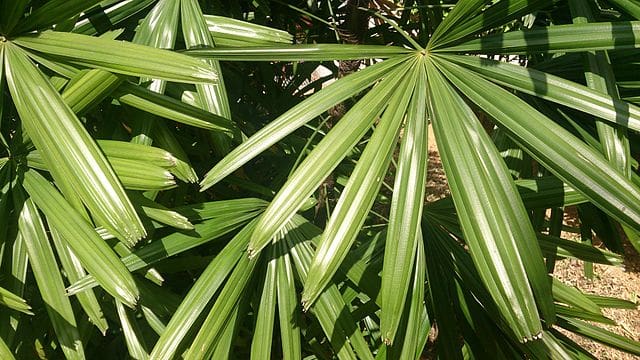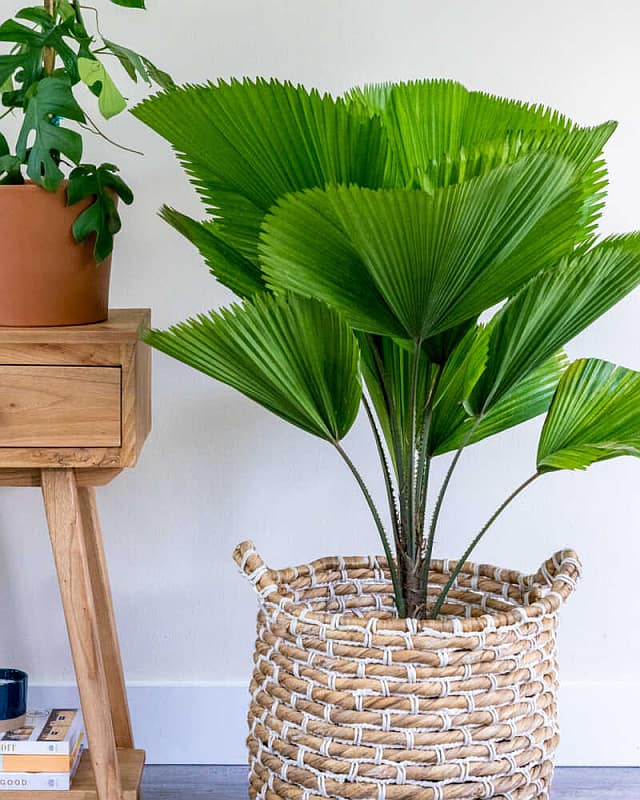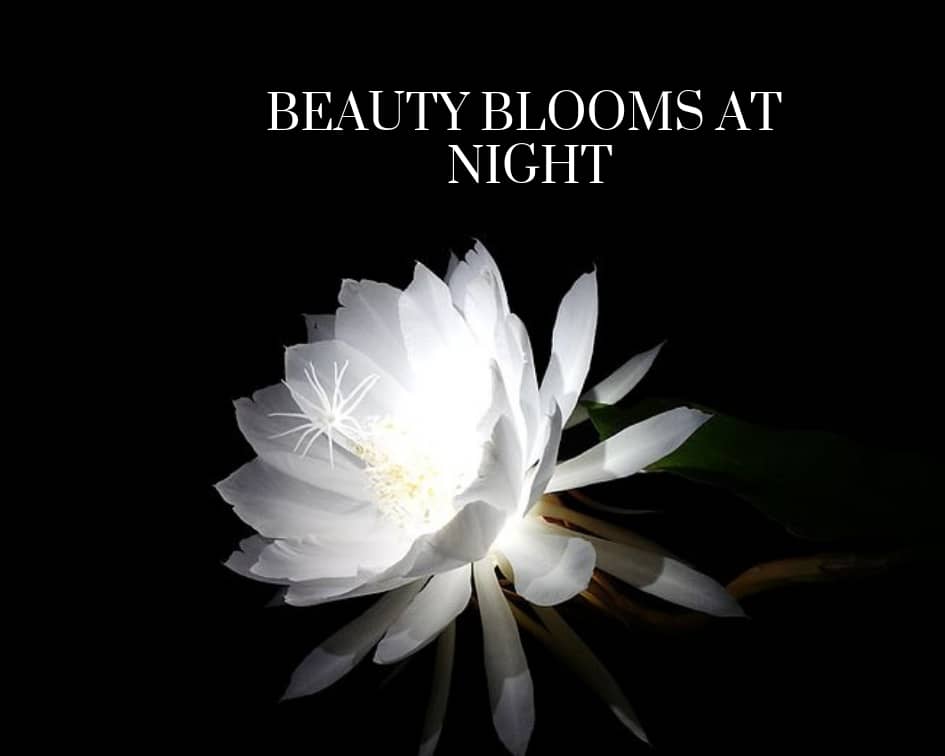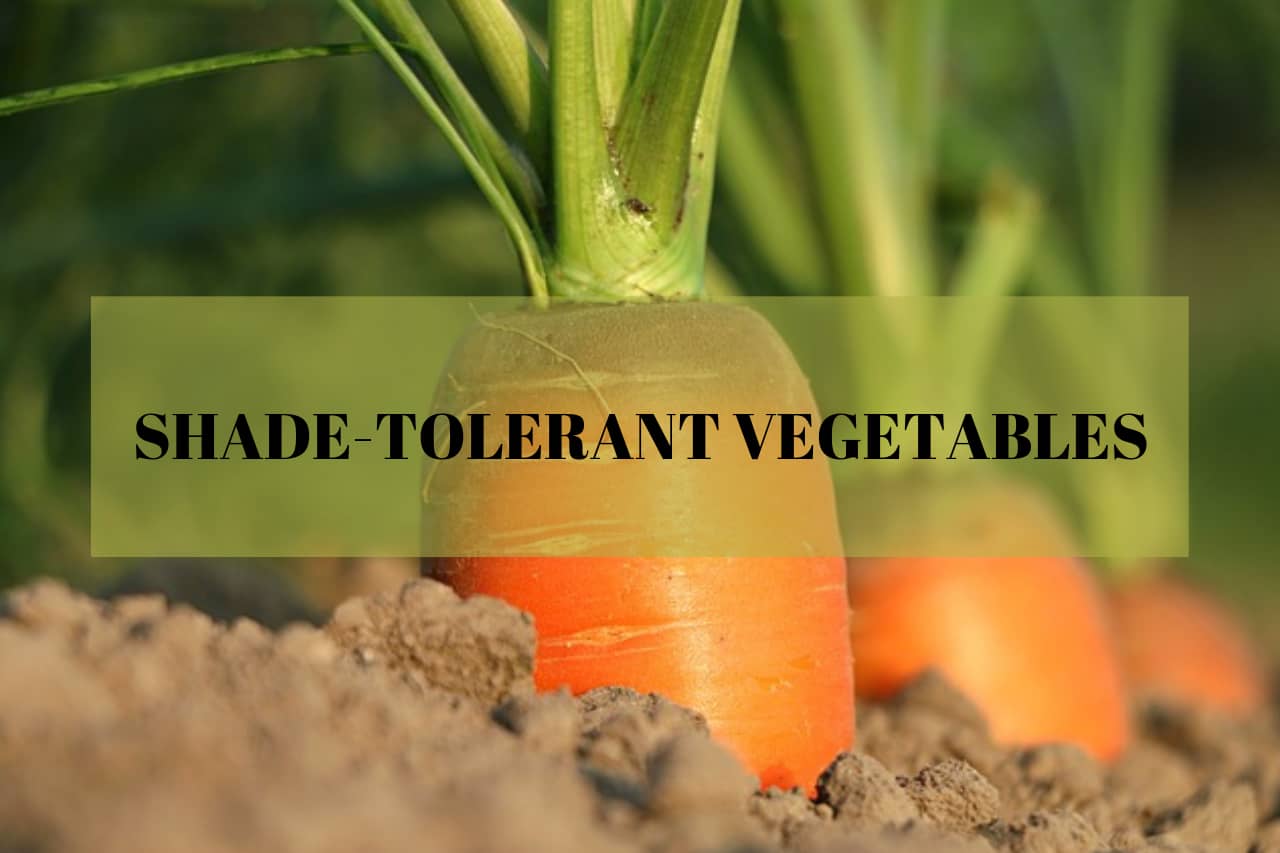This post may contain affiliate links. As an Amazon Associate we earn from qualifying purchases.
“What can I grow in a wet garden?”
Well, here’s an interesting question. It was a plea of help in an email from a lady in Florida with a boggy, soggy landscape. She has given up trying to fix it herself and it’s far too expensive to have it done professionally. No more fighting. “What can I grow?”
She wants to keep the tropical aspect and have I got the trees to give her a start on it. Tropical palms. Well, not all of them, but there are a good many palm trees that thrive in icky, wet soil.
About Palms
What distinguishes a palm from other trees is its lack of bark on the trunk. The palm’s trunk, called the stem, is softer than bark trees, giving the tree the ability to sway with the wind.
Most of the more than 3,000 species of palms are native to the tropical regions of the world that receive a minimum of 20 inches of rainfall a year. Because they don’t need to search deep in the soil for moisture, rainforest palms have shallow root systems, with some palms occasionally producing roots above the soil.
Here’s a couple to get you started Liz:
Licuala spinosa

Licuala spinosa is commonly known as the mangrove fan palm, which gives you an idea of how much these palm tree loves wet soil. It is native to river banks in Southeast Asia.
The mangrove palm tree requires high humidity levels and is best grown in tropical regions, although it is listed hardy to zones 9 through 11 on the U.S. Department of Agriculture Plant Hardiness Zone Map, so does well in subtropical Florida. L. spinosa grows to 15 feet in height.

Licuala grandis
Another member of the Licuala genus, Licuala grandis is native to the rainforests of the Solomon Islands. Commonly known as the ruffled fan palm, it bears a slender trunk – 4 to 5 inches in diameter – and grows to 10 feet in height.
L. grandis must have wet soil at all times. The ruffled fan palm does best within USDA Hardiness zones 10 and above (find your zone by entering your ZIP Code here). Grow it in full sun in the tropics and provide afternoon shade in the drier air of the subtropics. You can purchase both seeds (go here) and L. grandis seedlings (here) online.
Roystonea oleracea

If you like your palms tall, consider Roystonea oleracea, the Barbados royal palm, or imperial palm. Native to swampy areas from the Lesser Antilles to northeastern South America, R. oleracea grows to a majestic height of 65 feet.
In Trinidad, where this palm grows in the rainforest swamps, conditions are changing such that seedlings are forced to compete with increased forest floor vegetation and many are unable to survive. R. oleracea bears a single, slender white trunk and requires full sun and consistently wet soil.
Acoelorrhaphe wrightii

Another palm that advertises its love of wet soil in its nickname, the everglades palm (also commonly known as the paurotis palm), Acoelorrhaphe wrightii, is native to Caribbean, West Indies and Florida swamps.
A. wrightii is a clumping palm, the fans of which bear a silver cast. Although the individual trees in the clump grow at different rates, they are all capable of reaching 25 feet in height. A. wrightii does best when grown within USDA Hardiness zones 9b through 11. Buy seeds online here.
For more palm tree information, visit The Palm and Cycad Societies of Australia



